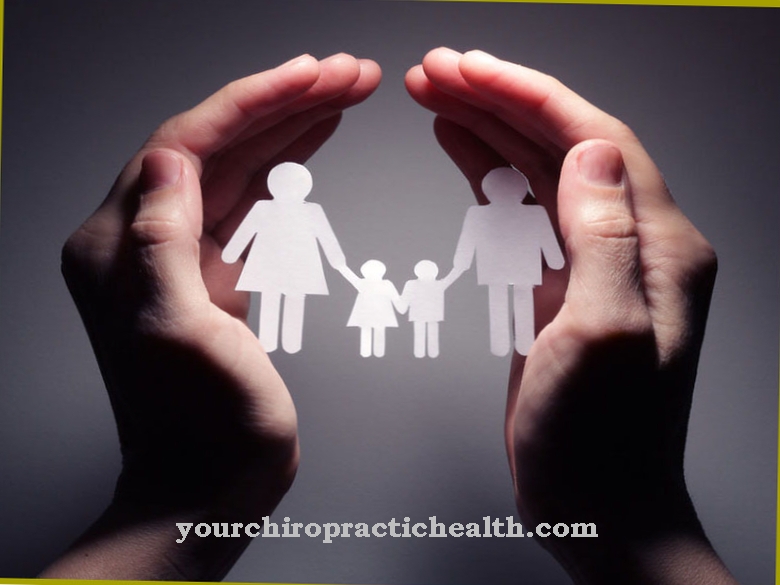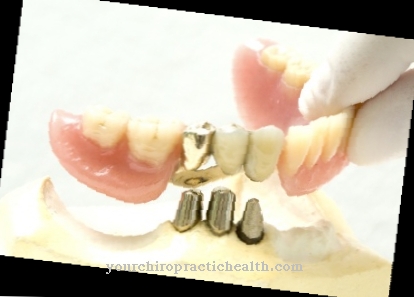The Rolfing is a complementary medical connective tissue treatment by the biochemist Ida Rolf, which aligns the body according to gravity to the ideal of the vertical line. The indication for therapy are complaints such as back pain. Contraindications arise, for example, with implants, inflammations or open wounds.
What is Rolfing?

The fascia network consists of soft tissue components of the connective tissue. They penetrate the entire body as a connecting tension network. Rolfing is a form of individual body work that affects the fascia network and aims to align the body with the ideal of a vertical line.
The complementary medical treatment is trademarked and related to the structural integration. The American biochemist Ida Rolf, who developed her theories on structural integration in the 1970s, is considered the founder of Rolfing. The first thoughts on Rolfing go back to the 1950s and were taught at Ida Rolf's Rolf Institute in Boulder / USA.
The basic idea of Rolfing is the assumption that the body needs less energy as soon as it aligns itself on a vertical line. According to Rolf, it is not the muscles but the fascia that are particularly crucial for maintaining the body. According to her speculations, the connective tissue reacts to everyday stress and injuries with hardening. Rolfing is designed to manually loosen this hardening and thus sustainably improve posture.
Function, effect & goals
The body needs less energy to straighten up, the closer the individual body sections are to the ideal of the vertical line. This assumption forms the basis of Rolfing. The fasciae change with prolonged exposure and as a result of trauma.
The reinforcements and hardening in the tissue fix acquired bad posture and thus limit the affected person's mobility. The individual body sections are no longer aligned with the ideal of the vertical line. According to Ida Rolf, Rolfing should enable a sustainable improved posture through manual treatment of the fascia and bring the body sections closer to the vertical line again. As a result, less energy is required to straighten up. Rolfing is not only aimed at medical problems, but realigns the body according to gravity.
At the beginning of the treatment there is a diagnosis in which the connective tissue is scanned. Rolfer relieve the hardening and tension detected in this way by slowly and manually applying pressure to the affected connective tissue.
Depending on the body region and the depth of the hardening, the therapists use their fingertips, knuckles, palms or elbows to dissolve them. Movement elements, perception factors and orientation elements in gravity are included as complementary elements in the therapy. Psychosocial factors can also play a role in rolfing. Most often, Rolfing is carried out for health care. It optimizes posture and creates more freedom of movement.
As an actual therapeutic agent, the method is sometimes used for myofascial dysfunction and for chronic pain conditions or poor posture. Structural fascial changes as a result of trauma can also be the indication for a Rolfing treatment. As a rule, ten sessions of 50 to 90 minutes each take place over a period of around three months. At the beginning of each session, the therapist analyzes the patient's posture and assesses the fascial structure when walking and standing.
The manual treatment takes place on a couch. The manual therapy is followed by the movement elements that are incorporated while sitting, standing or walking. In addition to optimizing all everyday positions, the Rolfer works with the patient to develop more economical movement options for everyday use.
You can find your medication here
➔ Medicines for back painRisks, side effects & dangers
Rolfing can cause pain in the connective tissue during and shortly after the treatment. However, the pain usually recedes within hours. Under certain circumstances, Rolfing treatments are more harmful than good for your health.
For example, acute inflammatory diseases and aneurysms or acute phlebitis are considered contraindications. The same is true of poorly healed wounds. Osteoporosis patients and pregnant women should also refrain from treatment. The therapy is also unsuitable for cancer patients, atherosclerosis patients or for mental illnesses. Caution is also advised with long-term cortisone treatments, in cases of mobility deficits due to bone, inflammatory rheumatism and degenerative muscle diseases. Other conceivable contraindications are recent trauma, herniated discs and heart disease.
Significant complications have also been observed in the past in patients with implants, since implanted elements could slip during therapy. The effectiveness of Rolfing remains controversial. A clinical study on chronic back pain patients now speaks in favor of a reduction in everyday restrictions. Apart from these study results, only experience reports and smaller studies with little informative value are available on Rolfing. This connection leads health insurance companies in particular to strongly criticize the method. Due to the lack of proof of effectiveness, German and Austrian health insurers have not yet covered the costs for Rolfing treatments.
Since Rolfing is not listed in the Hufeland directory and is therefore not one of the recognized naturopathic treatments, private health insurance companies are not necessarily obliged to cover the costs. Private supplementary insurance covers part of the costs at least in Austria. Switzerland is the only German-speaking country that already treats Rolfing as a recognized therapy method and treats healing methods recognized by complementary medicine. Therefore, Swiss supplementary insurance covers a large part of the therapy costs.
























.jpg)



